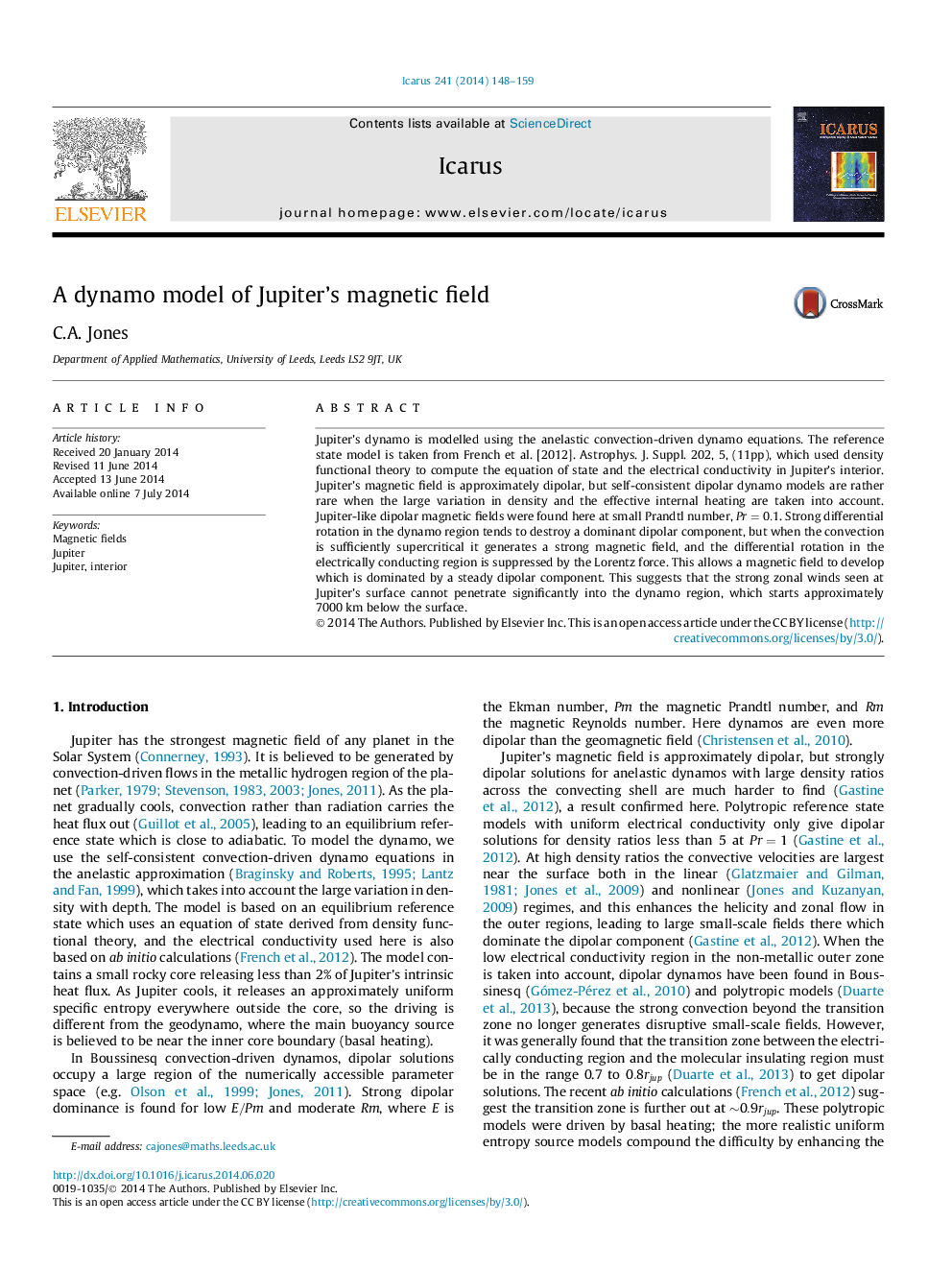| Article ID | Journal | Published Year | Pages | File Type |
|---|---|---|---|---|
| 8137763 | Icarus | 2014 | 12 Pages |
Abstract
Jupiter's dynamo is modelled using the anelastic convection-driven dynamo equations. The reference state model is taken from French et al. [2012]. Astrophys. J. Suppl. 202, 5, (11pp), which used density functional theory to compute the equation of state and the electrical conductivity in Jupiter's interior. Jupiter's magnetic field is approximately dipolar, but self-consistent dipolar dynamo models are rather rare when the large variation in density and the effective internal heating are taken into account. Jupiter-like dipolar magnetic fields were found here at small Prandtl number, Pr=0.1. Strong differential rotation in the dynamo region tends to destroy a dominant dipolar component, but when the convection is sufficiently supercritical it generates a strong magnetic field, and the differential rotation in the electrically conducting region is suppressed by the Lorentz force. This allows a magnetic field to develop which is dominated by a steady dipolar component. This suggests that the strong zonal winds seen at Jupiter's surface cannot penetrate significantly into the dynamo region, which starts approximately 7000Â km below the surface.
Related Topics
Physical Sciences and Engineering
Earth and Planetary Sciences
Space and Planetary Science
Authors
C.A. Jones,
